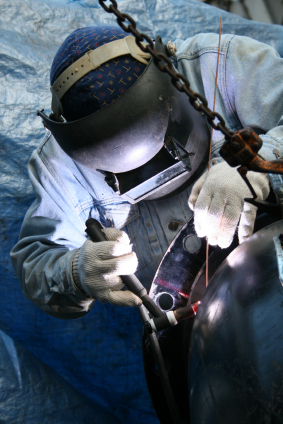
Hohenstein joins ZDHC Roadmap to Zero Programme
Short report on the outcome of the international conference on driving innovation and intelligent public procurement in the European Lead Market concerning PPE On the 1st and 2d December 2008 the PPE Conference in Hengelo, The Netherlands developed a road map for the protection of workers and on competitiveness for the supply chain. The PPE Conference was organized by the Foundation Engineering of Fibrous Smart Materials (EFSM) at University Twente in

13th January 2009
Innovation in Textiles
|
Twente, Netherlands
Short report on the outcome of the international conference on driving innovation and intelligent public procurement in the European Lead Market concerning PPE
On the 1st and 2d December 2008 the PPE Conference in Hengelo, The Netherlands developed a road map for the protection of workers and on competitiveness for the supply chain.
The PPE Conference was organized by the Foundation Engineering of Fibrous Smart Materials (EFSM) at University Twente in the Netherlands. The PPE Conference fitted in the lead market initiative announced at the end of 2007 by the European Commission and was held under the patronage of EURATEX, the European Safety Federation and the European Textile Services Association. It received support from key sponsors Huntsman, Protex, Teijin Aramid, TenCate and TNO and received a grant from the Innovation Platform Twente.
 The road map identified a number of promising areas that will enhance security and safety of workers. In the first place technologies made with nanotechnologies could provide better levels of protection at lower weight hence higher comfort. The integration of dynamic materials could enable safety products to react to changing temperatures, or react to chemical or biological agents ranging from acids to bacteria. Smart materials, combining electronics would enable a tracking of workers or provide energy for feeding communication functions. The road map identified a bright future for solutions providing for better protection and comfort.
The road map identified a number of promising areas that will enhance security and safety of workers. In the first place technologies made with nanotechnologies could provide better levels of protection at lower weight hence higher comfort. The integration of dynamic materials could enable safety products to react to changing temperatures, or react to chemical or biological agents ranging from acids to bacteria. Smart materials, combining electronics would enable a tracking of workers or provide energy for feeding communication functions. The road map identified a bright future for solutions providing for better protection and comfort.
The road map was discussed during the conference and fine tuned as well as complemented. Prof. Hein Daanen, TNO Defence, Security and Safety asked for a further focus on physiology and ergonomics. Advances in measurement techniques (such as sensors and body scanning) offer a better understanding of human behaviour and for example a better combination of materials and fit in order to enhance comfort and performance. Speakers from material suppliers such as TenCate, Lenzing and Protex advocated that multi-fibres and hybrid materials offer a more customized approach to protecting specific end-users. Huntsman and Digitex presented chemical technologies in finishing that create products that protect against several risks at the time.
Several speakers such as Tara Veit (Dupont) and Margo Paap (Berendsen) highlighted that a customized approach implies intensive dialogue between supplier and end-user in terms of specifying the requirements based on real conditions of use with a dedicated selection of materials and design of products. The SUCAM method was put forward by several speakers, such as Steven van der Minne (NEN) as a superior approach for selection, use care and maintenance of PPE. It was recommended that the SUCAM approach would be used in social dialogue between employers and employees as the preferred procedure to define PPE.
Fred Foubert (Centexbel) warned that compliance with standards may give a false sense of security. Standards are based on lab conditions, and do not reflect real sue conditions and do not take into account ageing of products and degradation by maintenance such as laundry. Teijin Aramid demonstrated that increasingly tests are no longer based solely on samples of materials but are also based on state of the art manikins equipped with sensors. In addition, response from end-users is increasingly fed back into product development. Maintenance issues should be clearly integrated in product development as well as appearance and acceptance.
Rinus Brinks, Chairman of the European Safety Federation, advocated a more holistic approach to selection of PPE based on the combination of equipment. He gave the example that a helmet and an earmuff may each comply with standards while the combination may be incompatible. Margo Paap (Berendsen) demonstrated that for some industries, such as the glass industry, the security risks are not covered by standards. The methods developed could very be implemented in voluntary agreements as proposed by the European Commission and developed in The Netherlands by the Labour Foundation (Stichting van de Arbeid). Hence it was broadly accepted that standards should not act as a barrier to innovation, and that new approaches should be developed.
It was generally acknowledged that the PPE sector would benefit from more intensive exchange of information on end-user needs and perceptions and on technical possibilities. Principles of integrated product development and open innovation should be more developed. However Jean Francois Gribomont, Chairman of Promptex advocated that procurers should develop terms of references based on end user requirements and not on standards or technical specifications. It was widely acknowledged that innovative public procurement is crucial for the industry as it represents between 60 and 90 percent of turnover in PPE.
The European Commission, represented by Dr.Luis Filipe Girao (DG Entreprise) and John Cleuren (DG Research) asked the industry to come with policy proposals. Dick Hendriks, Chairman European Technology Platform for Textiles and Clothing, proposed in his closing statement to create a platform for public procurers in order to exchange best practices in procurement to develop training tools and to involve end-users. It was further proposed to develop scenarios for three end-users and assessing the benefit of new technologies in a forecast of future risk for specific first responders, industrial workers and service workers. The European Technology Platform for Textiles and Clothing and the European Safety Federation announced a joint ambition to establish this platform.
Better cooperation in research and development was proposed. Mapping of innovation competences was proposed in relation to the European Security Research and Innovation Forum. A network of research and innovation clusters in protective equipment was also supported using the Europa Innova, Regions of Knowledge and ERANET programs. The Minister of Economics of the Netherlands, Mrs. Maria van der Hoeven, announced a program for materials and security research during the conference. The Mayor of Enschede, confirmed that security and materials is a priority in innovation for the Twente Region.
The conference was attended by almost 200 delegates representing the entire supply chain in personal protective equipment from material suppliers to end-users. The PPE sector represents a turnover of € 10 billion and is relevant for the security of 140,000 workers in Europe. The EU is a leading supplier of PPE and supplies for example fabrics to the US Military as well as shoes to the Indian mountain forces. Delegates to the conference came from eighteen countries. Represented were fibre producers, manufacturers and distributors of PPE but also buyers for police and fire fighting and health and safety executives of chemical companies. In addition representatives were present of eleven research projects funded in 2006 and 2008 by the European Commission. Dick Hendriks, chairman of the Conference Program Committee and chairman of the Governing Council of the European Technology Platform for Textiles and Clothing, announced a follow up conference to be held in 2011 in Germany.

Business intelligence for the fibre, textiles and apparel industries: technologies, innovations, markets, investments, trade policy, sourcing, strategy...
Find out more